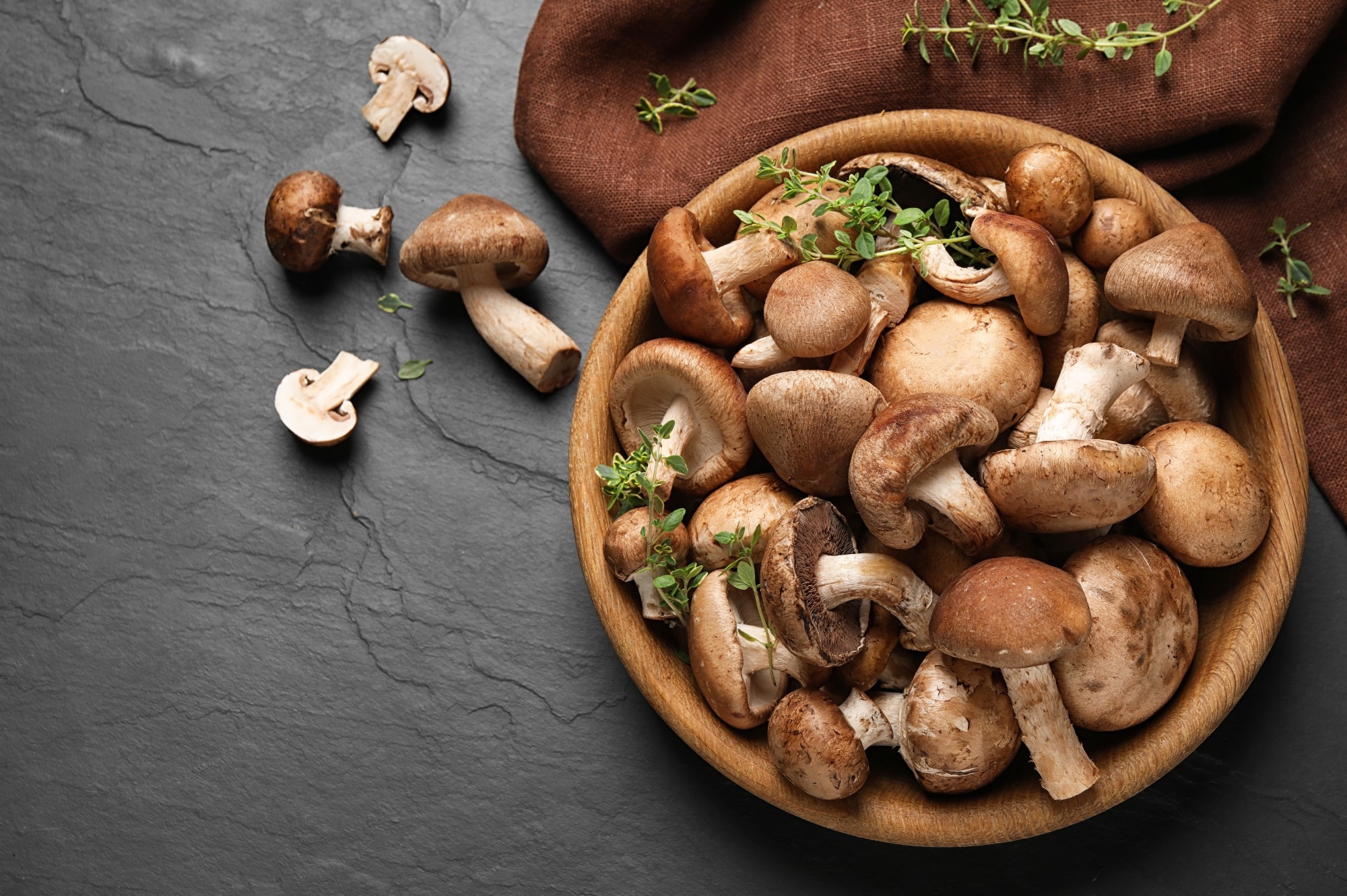In a recent Phytotherapy Research study, scientists review existing literature on edible mushrooms and their bioactive constituents and their impact on hypertension.
 Study: Edible mushrooms as potential functional foods in amelioration of hypertension. Image Credit: New Africa / Shutterstock.com
Study: Edible mushrooms as potential functional foods in amelioration of hypertension. Image Credit: New Africa / Shutterstock.com
The health benefits of mushrooms
Edible mushrooms are enriched with nutritional bioactive compounds, dietary fiber, amino acids, sterols, proteins, vitamins, and minerals that can influence cardiovascular functions. These types of mushrooms are considered a common functional food that is present in different types of diets, such as the Mediterranean diet and Dietary Approaches to Stop Hypertension (DASH).
The role of mushrooms as a dietary intervention to alleviate cardiovascular events and hypertension is not clear. Thus, it is imperative to understand the underlying mechanism of action of bioactive constituents of mushrooms on heart and allergenicity.
What is hypertension?
Hypertension is a chronic, modifiable, non-communicable, and multifactorial condition that leads to an increase in arterial blood pressure. As a result, hypertension is a major risk factor for heart disease. In 2015, around 4.5 million and 4.0 million deaths in men and women, respectively, were attributed to higher systolic pressure.
Normal blood pressure is attributed to an average diastolic blood pressure of 80 mmHg and average systolic blood pressure of 120 mmHg. An individual is considered to have hypertension when their systolic blood pressure is above or equal to 140 mmHg, and diastolic blood pressure is greater than or equal to 90 mmHg.
If hypertension remains untreated, the individual is at a high risk of experiencing cardiovascular events, stroke, aortic syndromes, heart failures, atrial fibrillation, aortic valve stenosis, and hypertensive cardiomyopathy.
The role of mushrooms in ameliorating hypertension
Dietary interventions associated with the inclusion of functional foods (FF) have become increasingly popular in the management of several chronic ailments, including hypertension. Mushrooms are macrofungus abundantly loaded with essential bioactive compounds, including polyphenols, terpenes, ergosterols, and terpenoids, as well as proteins and polysaccharides.
The bioactive compounds of mushrooms have been shown to reduce hypertension. Furthermore, mushrooms also contain many vitamins such as cobalamin, riboflavin, thiamine, vitamin D, and ascorbic acid, and minerals, including magnesium, sodium, iron calcium, manganese, potassium, phosphorus, and copper.
Several studies have indicated that mushrooms present in the DASH and Mediterranean diets significantly benefit patients with hypertension. Some of the different types of mushrooms that might be incorporated into these diets include portobello, maitake, shiitake, reishi, oyster, yellow-cap, shimeji, enoki, and cauliflower mushrooms.
How do mushrooms improve hypertension?
Cholesterol, homocysteine, high-density lipoprotein (HDL), low-density lipoprotein (LDL), homeostasis, fasting triacylglycerol, antiplatelet aggregation, and inflammation biomarkers are often used to determine the effect of food on hypertension.
Cholesterol biosynthesis is associated with the mevalonate pathway that occurs in the hepatic system, which involves various enzymatic reactions.
Changes in the enzyme 3-hydroxy-3-methylglutaryl coenzyme A (HMG-CoA) appear to influence cholesterol biosynthesis. The transformation of HMG-CoA to mevalonic acid is therapeutically targeted to alleviate hypertension. Notably, bioactive components in mushrooms inhibit the activity of HMG-CoA reductase, which is essential for cholesterol synthesis.
Mushrooms also contain high levels of flavanols, particularly quercetin, and fibrinolytic enzymes that exert vasorelaxation and inhibit vascular plaque within arteries. Synergistic effects linked to vasorelaxation, cholesterol biosynthesis, and fibrinolytic systems prevent hypertension.
Several components of mushrooms, such as cordycepin, ergosterol, chitosan, mannitols, β-glucans, tocopherols, indoles, and ergothioneine, are associated with positive effects on heart function. Ergosterol undergoes photolysis and produces various metabolites of vitamin D, which regulates calcium levels in the body. Reduced vitamin D levels have been associated with an elevated risk of hypertension.
Lovastatin has been extracted from the fruiting portion of Agaricus bisporus, Lentinula edodes and Chanterelle cibarius. This bioactive compound enzymatically transforms to hydroxy acid, which inhibits the transformation of HMG-CoA to mevalonic acid, thereby leading to the lowering of cholesterol levels.
Tocopherols are extracted from Craterellus cornucopioides, which appear to exert positive effects on heart function. Chitosan, which is present in Imerlia badia, can alleviate LDLs and triglyceride levels in the blood.
Many in vivo and in vitro studies have revealed that systematic introduction of γ-aminobutyric acid (GABA) antagonist can lower blood pressure and bradycardia through activation of GABA-receptors in cardiovascular tissues.
Conclusions
The current review described how mushrooms and their bioactive compounds can ameliorate hypertension. Dietary interventions, such as the DASH and Mediterranean diets that often include mushrooms, can alleviate chronic hypertension.
Several bioactive compounds obtained from mushrooms, such as lovastatin, cordycepin, ergosterol, and eritadenine, influence gene expression that induces cardiovascular functionalities as a result of their structural similarities with adenosine or cholesterol moieties. Therefore, these molecules are potential drug candidates that can be used to reduce hypertension; however, this requires further research.
The dietary intake of mushrooms can be used as a prophylactic measure without circumventing antihypertensive drug treatment. More studies are needed to understand the role of mushroom polysaccharides such as D-mannitol in modulating cholesterol biosynthesis and adsorption.
Journal reference:
- Rauf, A., Joshi, P. B., Ahmad, Z., et al. (2023) Edible mushrooms as potential functional foods in amelioration of hypertension. Phytotherapy Research. doi:10.1002/ptr.7865

